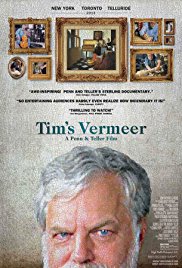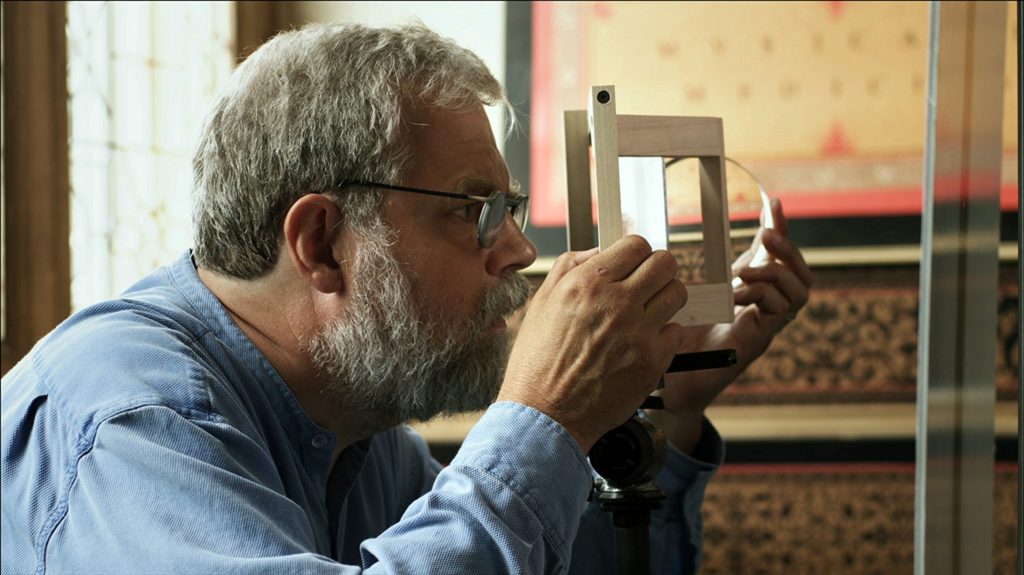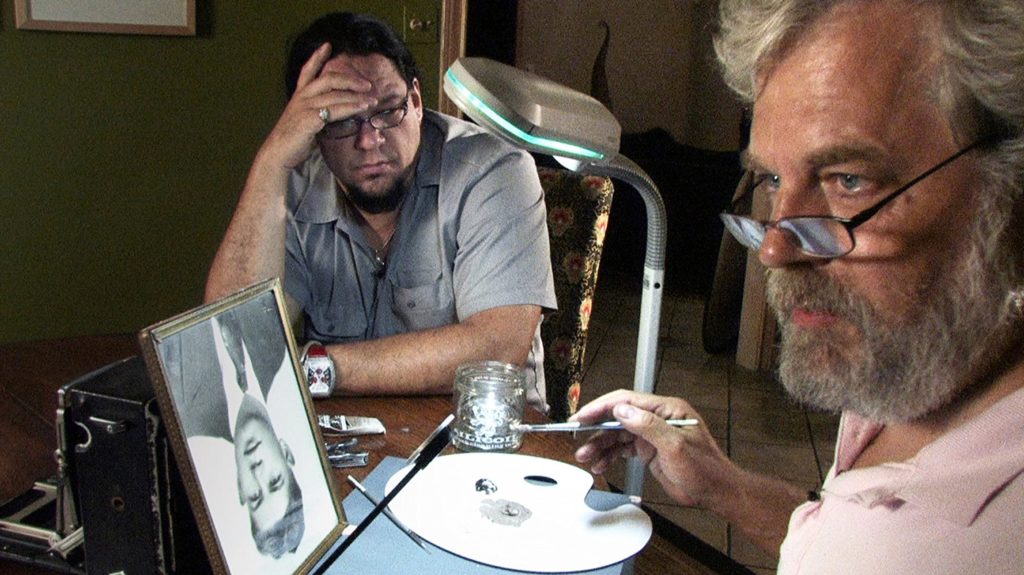It Doesn’t Take an Artist to Make a Masterpiece
DIRECTED BY TELLER/2013
 “Thank God for millionaires”, said my mother-in-law. This was just one of her typically refreshing, unconventional sentiments in a recent conversation about Tim’s Vermeer. While she herself has never come close to such exuberant financial status, she’s been in the game long enough to recognize that millionaires can make exceptional differences in the world that few others are able to. It is millionaire Tim Jenison, and others like him, who inspired that statement. He is the Tim of Penn & Teller’s surprisingly restrained yet imminently watchable new documentary, Tim’s Vermeer; a taut little film which I enjoyed every second of.
“Thank God for millionaires”, said my mother-in-law. This was just one of her typically refreshing, unconventional sentiments in a recent conversation about Tim’s Vermeer. While she herself has never come close to such exuberant financial status, she’s been in the game long enough to recognize that millionaires can make exceptional differences in the world that few others are able to. It is millionaire Tim Jenison, and others like him, who inspired that statement. He is the Tim of Penn & Teller’s surprisingly restrained yet imminently watchable new documentary, Tim’s Vermeer; a taut little film which I enjoyed every second of.
Jenison, now greying and well into middle age, made it big years ago in the world of post-production video, having invented the “Video Toaster”, a ground-breaking computer-graphics generator. He is also the founder of the successful San Antonio-based NewTek technology company. With his fortune secure, but his innovative and curious mind ever reeling, he turns his attention towards unlocking the secrets of artisans past, particularly the deeply buried secrets of Dutch Master Painter, Johannes Vermeer. This is indeed worth being thankful for, as Tim’s great obsession, documented from beginning to end, is the all-consuming stuff of which no financial mortal could take on.
Over 400 years ago, Johannes Vermeer painted photorealism. Not just any photorealism, but a level of which would seem to command a degree of technological assistance not known in his time. Indeed, upon close inspection of Vermeer’s mind-boggling use of light, Jenison notes certain falloff and edge blur heretofore exclusively associated with video as a predominant value in his work. This places the mystery in the realm of either quiet DaVinci-ian genius or Ancient Astronauts. Never mind if or how Vermeer developed and utilized some sort of secret rudimentary video technology; former Vermeer research, predating video, has resulted in an ongoing and exhaustive debate in the fine arts world regarding whether using technology is “cheating”.

Jenison sidesteps all of that high falutin’ squabbling, eventually leading him to a solid theory as to how Vermeer did it, which he in time realizes can only be proven if he himself can accurately replicate a Vermeer masterpiece. (He chooses “The Music Lesson”.) And so, he sets out to do just that – recreating Vermeer’s working conditions, surroundings, tools and materials, right down to the last achievable detail. He builds Vermeer’s studio in his own San Antonio garage. He dresses his good sport of a daughter in draping period garb and locks her in the pose. It is a long and uneventful commitment to monotony, more like needlepoint than conventional painting, but the results are nothing short of fascinating, even amazing.
This, despite the glaring fact that Jenison is no artist. This is self-admitted, repeatedly. Rather, he is a technician through and through, and it is his technician’s mind that leads him to realize that the secrets of Vermeer – secrets the painter took to his grave – may well have to be more technical and mundane in process than art historians have allowed for. Once Tim figures out that anyone, if given the proper time, technology, and wherewithal, could do what Vermeer did, he’s off and running on one of the most unlikely endeavors in art history.

(L. to R.) Penn Jillette and his friend Tim Jenison, painting.
Although scientific principles of video technology, the nature of light itself, and other dry topics play heavily into the nuts and bolts of it all, director Teller and narrator Penn Jillette explain all of it in the most approachable of manners (casting aside the sharp-edged showmanship they’re known for). Along the way, just beneath the surface, Tim’s Vermeer gets at numerous deep questions about the nature of art, and by extension of the medium via which we’re engaging with it, filmmaking.
Filmmaking has long been acknowledged as an art form, albeit one so successful that it became a business. The business end may’ve culturally overshadowed the artistic at this point, but there’s a third angle that can’t be avoided no matter how one accepts the medium: Technology. Movie-making, now more than ever, thanks to the digital revolution, is technology. The old question has been that if there’s an inherent rift between art and technology, how can filmmaking be art (as opposed to a novelty, a distraction, a thing)? And if it is, where do the tools and tech end, and the talent begin? While we may’ve gotten our collective mind around most of those issues, we still tend to lack differentiation in lauding a piece of fine craftsmanship versus a piece of personal resonance (if it must indeed be a matter of one or the other), often valuing the former above the latter. How does a film like this qualify? What about a replicated Vermeer, created of personal obsession rather than dubious intentions? Even as our ideas of what is and isn’t “art” has shifted since Vermeer’s time, or the dawn of filmmaking, just how does immersion into technology hinder and reform our notions and observations of the natural world?
These ideas, and the myriad of others that may cross your mind while watching Tim’s Vermeer, are what makes the film important. But it’s Jenison’s friendly, affable demeanor coupled with Penn & Teller’s straight-forward intuitive approach, that makes it so enjoyable. Thank God for these millionaires, and thank them for Tim’s Vermeer.

